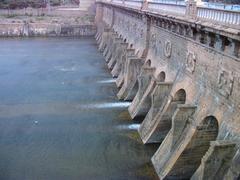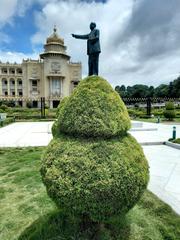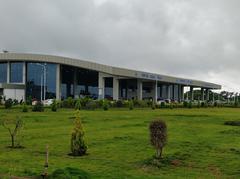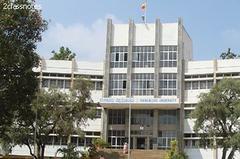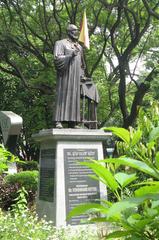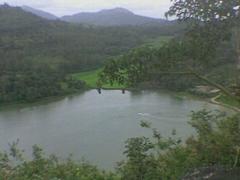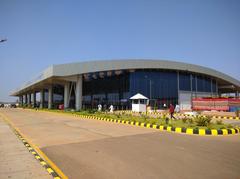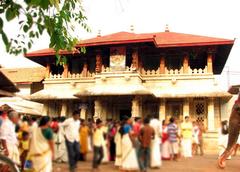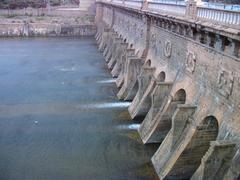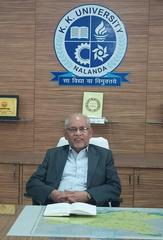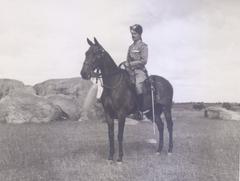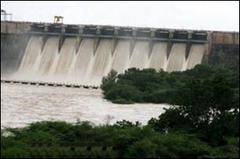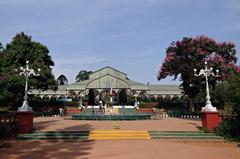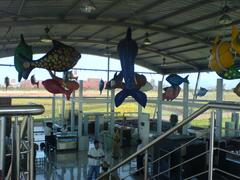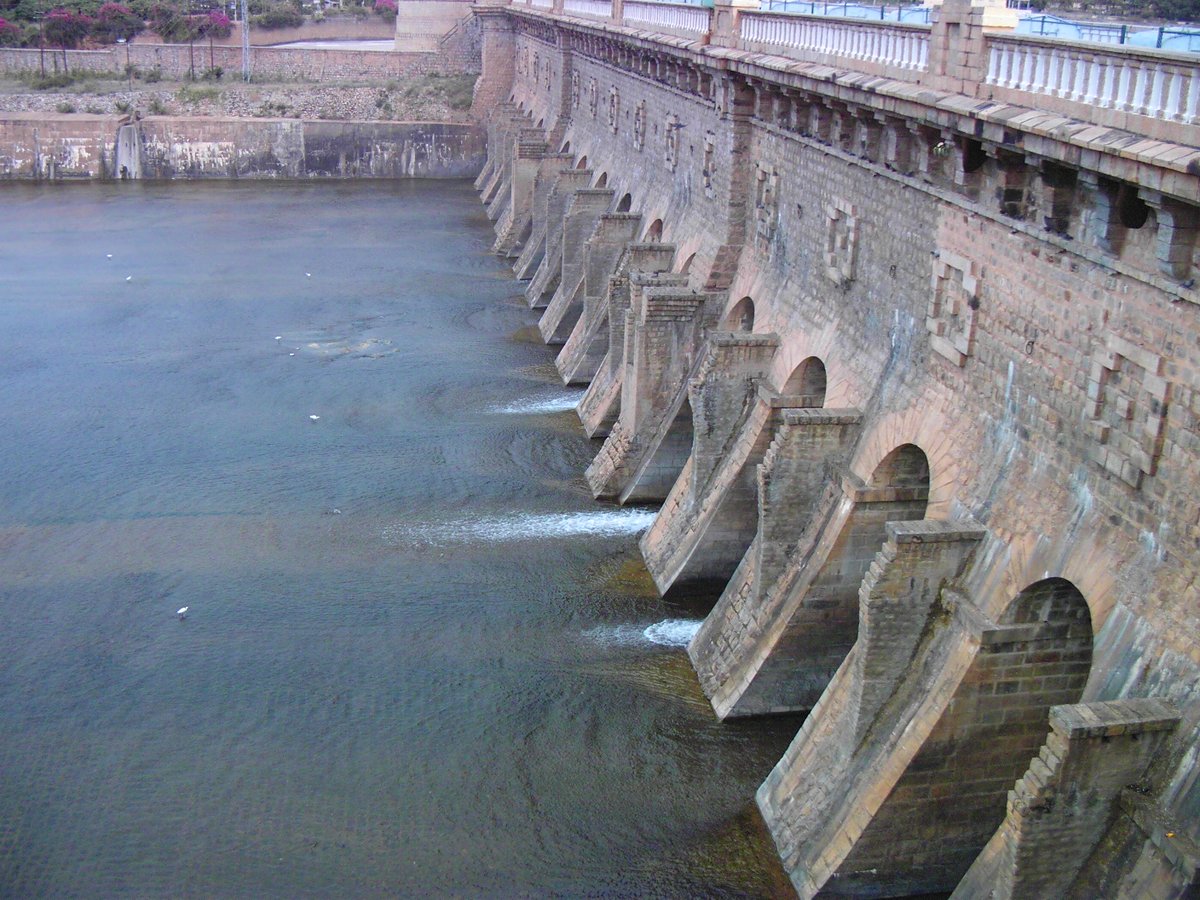
Linganamakki Dam Visiting Hours, Tickets, and Travel Guide
Date: 14/06/2025
Introduction
Linganamakki Dam, situated in Karnataka’s Shimoga (Shivamogga) district on the Sharavathi River, is a remarkable blend of engineering achievement, natural splendor, and cultural heritage. Built in the 1960s, the dam not only transformed the region’s landscape and economy but also created a vibrant eco-tourism hub. This detailed guide provides everything travelers need to plan a memorable visit: history, visitor information, accessibility, nearby attractions, travel tips, and insights into the dam’s cultural and environmental significance (Indianetzone; Wikipedia).
Historical Background
Genesis and Purpose
The Linganamakki Dam was conceptualized and constructed between 1964 and 1965 to harness the perennial flow of the Sharavathi River for irrigation, drinking water, and hydroelectric power generation. Its strategic location, 6–10 km upstream of Jog Falls, allows it to regulate water flow and provide essential resources for the Malnad region (Wikipedia; Indianetzone; Trawell).
Socio-Economic and Environmental Impact
The dam’s construction revolutionized regional agriculture, improved water supply, and delivered clean hydroelectric power, vital for Karnataka’s development (Fenice Energy; Seawatersports). However, the reservoir submerged numerous villages and forests, a transformation that continues to shape local communities and biodiversity (Shivamogga.org).
Engineering Significance
Structural Features
Linganamakki Dam stretches approximately 2.4–2.74 km across the Sharavathi River and stands 193 feet (59 meters) above its foundation, at an elevation of 1,819 feet (554 m) above sea level. The reservoir covers nearly 300 km² and can store up to 4,368 million cubic meters of water, making it one of India’s largest man-made reservoirs (Wikipedia; Indianetzone). Eleven spillway gates manage water release, and feeder reservoirs with canals optimize water management (Holidify).
Hydroelectric Power
The dam powers the Sharavathi Valley Hydroelectric Project, with an installed capacity of 55 MW and annual generation of around 245 GWh. This project is a cornerstone of Karnataka’s renewable energy strategy (Fenice Energy; Seawatersports).
Visiting Linganamakki Dam: Hours, Tickets, and Accessibility
Visiting Hours
- General Visiting Hours: 8:00/9:00 AM to 5:00/6:00 PM daily. Best visited during daylight and post-monsoon months (September to February) when the reservoir is at its fullest and the landscape most vibrant (Holidify; traveltwosome.com).
Entry and Fees
- Entry: Free. Some activities, such as guided tours, boat rides, or camping at Honnemaradu, may have nominal charges. Confirm with local operators for the latest details.
Accessibility
- By Road: The dam is accessible via Sagara (about 30–35 km away), which connects to Shimoga and Bangalore.
- Public Transport: Buses, taxis, and private vehicles are available from Sagara and nearby towns.
- For Differently-Abled Visitors: Some accessible pathways and parking are present, but the terrain may be uneven. Contact local tourism offices for assistance.
Geographical and Natural Features
Location & Topography
Linganamakki Dam sits within the Sagara taluk of Shimoga district, at 1,819 feet elevation. The Sharavathi River, originating in the Western Ghats, meanders through dense forests and undulating terrain before reaching the dam (riversinsight.com; matthuga.in).
Hydrology
The dam impounds up to 4,368 million cubic meters of monsoon-fed water, supplemented by canal transfers from neighboring reservoirs. Backwaters and numerous islands add to the region’s scenic diversity (matthuga.in).
Top Attractions and Activities
Honnemaradu (“Golden Lake”)
Located on the dam’s backwaters, Honnemaradu is celebrated for its pristine waters and adventure activities like kayaking, canoeing, coracle rides, and island camping. Eco-friendly campsites are available through authorized operators (tripoto.com).
Jog Falls
Just 6 km downstream, Jog Falls is India’s second-highest plunge waterfall, especially spectacular during monsoon. The falls are accessible by road and feature dedicated viewpoints (riversinsight.com).
Islands and Backwaters
The reservoir is dotted with islands, many accessible by boat, perfect for solitude, camping, and panoramic photography (tripoto.com).
Forests and Biodiversity
Surrounding the dam are swathes of Western Ghats forests—part of a UNESCO World Heritage Site—home to endemic flora and fauna, including Malabar giant squirrels, langurs, deer, hornbills, and kingfishers.
Other Attractions
- Dabbe Falls: A secluded waterfall reached via a forest trek near Sagara (tripoto.com).
- Tyavarekoppa Safari: Wildlife park near Shimoga offering guided lion and tiger safaris.
- Keladi and Sagara: Historical temples and heritage sites in the nearby towns.
Cultural and Historical Context
Submerged Heritage
Construction of Linganamakki Dam submerged over 30 villages, including Madenur. The stories of displacement and adaptation are preserved in local literature and oral histories, such as the novel “Punarvasu” (karnatakatravel.blogspot.com).
Sigandur Chowdeshwari Temple
This ancient riverside temple, accessible by ferry, remains a vibrant spiritual center. Daily rituals and festivals attract devotees from across Karnataka (bestbengaluru.com).
Environmental Considerations
Despite landscape transformation, the reservoir and forests remain rich in biodiversity. Strict regulations on camping, litter, and noise help preserve the environment. The dam also supports the local microclimate and sustains regional wildlife (tripoto.com).
Practical Visitor Information
Best Time to Visit
- Ideal Months: June–September (monsoon/post-monsoon) for lush scenery and full reservoirs.
- Weather: Carry rain gear for monsoon visits; paths can be slippery.
Facilities
- Amenities: Basic toilets, parking, and a KSTDC restaurant near the dam (india.com).
- Dining: Local eateries serve Karnataka cuisine, including rice dishes and coconut-based curries.
Accommodation
- Options: Government guesthouses, private hotels, and homestays are available in Sagara, Talaguppa, and near Jog Falls (traveltwosome.com).
Travel Tips
- Plan visits for early morning or late afternoon for best light and cooler temperatures.
- Respect safety boundaries, especially near spillways and water edges.
- Combine your visit with nearby attractions for a richer experience.
- Book guided tours or camps in advance, especially during peak season.
- Support local guides and businesses for an authentic experience.
Frequently Asked Questions (FAQ)
Q1: What are the Linganamakki Dam visiting hours?
A1: Typically 8:00/9:00 AM to 5:00/6:00 PM daily.
Q2: Is there an entry fee or ticket required?
A2: Entry to the dam area is free; activity fees may apply for tours and boat rides.
Q3: Are guided tours available?
A3: Yes, through local operators and the Karnataka State Tourism Development Corporation.
Q4: How do I reach Linganamakki Dam?
A4: By road via Sagara (nearest town, ~30 km), with buses, taxis, or private vehicles.
Q5: Is the dam accessible for differently-abled visitors?
A5: Some accessible pathways exist, but terrain is uneven. Contact local offices for assistance.
Key Facts at a Glance
- Location: Sagara Taluk, Shimoga District, Karnataka, India (Wikipedia)
- River: Sharavathi
- Year of Completion: 1964–1965
- Length: 2.4–2.74 km
- Height: 193 ft (59 m) above foundation
- Reservoir Area: ~300 km²
- Storage Capacity: 4,368 million m³
- Hydroelectric Capacity: 55 MW
- Main Functions: Irrigation, drinking water, hydroelectricity, flood control
Useful Links and Resources
- Indianetzone - Linganamakki Dam
- Wikipedia - Linganamakki Dam
- Holidify - Dam Sightseeing
- Fenice Energy - Hydroelectric Power
- Tripoto - Honnemaradu & Linganamakki
- Rivers Insight - Sharavati River
- Shivamogga.org - Tourism
- Travel Two Some - Dam & Backwaters
- Karnataka Travel Blogspot - Submerged Villages
- Best Bengaluru - Sigandur Chowdeshwari Temple
- India.com - Architecture
- Karnataka Tourism Official Site
- Shimoga District Official Website
Conclusion
Linganamakki Dam is a destination where nature, history, and culture converge. Whether marveling at engineering feats, exploring lush forests, experiencing local traditions, or simply soaking in panoramic views, visitors will find the region both inspiring and enriching. Plan ahead, respect local guidelines, and immerse yourself in the beauty and heritage of this unique Karnataka landmark.
Download the Audiala app for real-time updates and travel planning, and follow our channels for more guides and travel inspiration.
